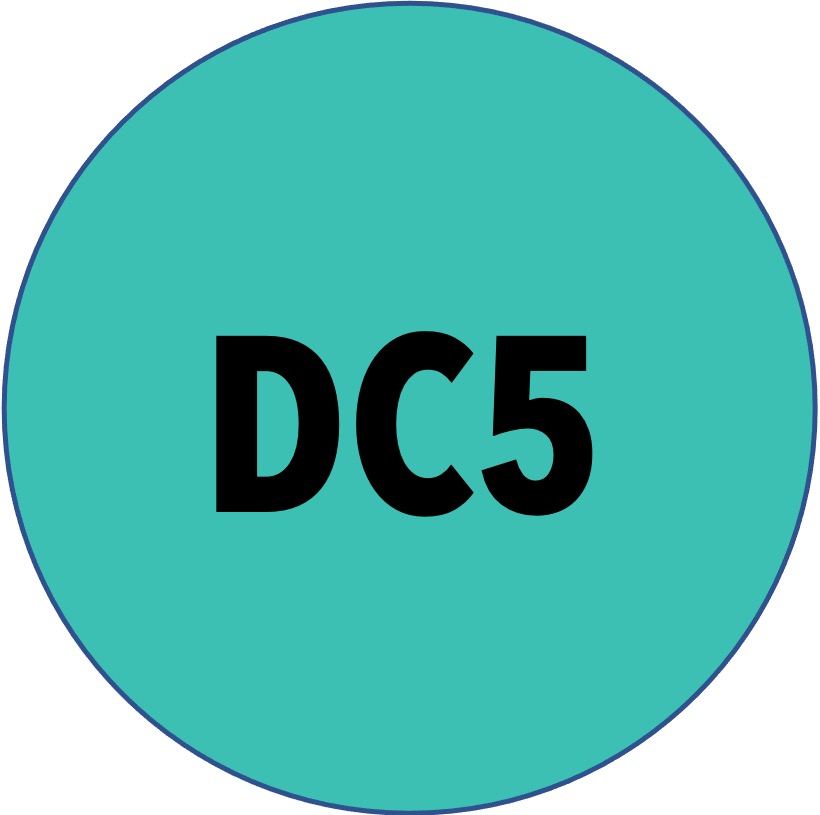ALL Positions ARE NOW FILLED
Positions were originally advertised on Euraxess: https://euraxess.ec.europa.eu/jobs/838793


Positions were originally advertised on Euraxess: https://euraxess.ec.europa.eu/jobs/838793
Host institution: UIBK
Project supervisor: Birgit Sattler
Objectives: 1) To determine inoculation sources of microbes for glacial habitats through the collection of bioaerosols via different types of air samplers for culture dependent and culture-independent community analysis. 2) To assess biomass and productivity from airborne input using radionuclide essays to assess bacterial biomass production (3H-leucine incorporation). 3) To define the biodiversity of bioaerosols through metagenomics and amplicon analyses. 4) To assess the source of inorganic depositions such as microplastics being translocated from industrial sources and to evaluate the impact thereof on pristine environments and their living communities using FTIR-spectroscopy (Fourier transform infrared), Raman spectroscopy and bioassays with microplastics on e.g. invertebrate larvae of glacial rivers.

Host institution: CNRS
Objectives: 1) To investigate the post-depositional selection of airborne microbial communities and biogeochemistry on adaptation and selection in glacial snowpacks through the analyses of metagenomes and transcriptomes. 2) To analyse the shifts between dormancy and activity related to physico-chemical triggers at the snow-ice interface. 3) To determine if glacial ice is a potential seeding source to basal snowpacks, hypotheses will be tested using snow chambers and microcosm laboratory experiments.

Host institution: Aarhus
Objectives: 1) To investigate the fixation of carbon and production of metabolites by primary producers in snow, ice and cryoconite habitats, using 13C substrates and analyses in novel an- and cat- Ion Chromatography System (ICS-6000) hyphenated with a ultra high resolution Orbitrap mass spectrometer (IC-UHRMS). 2) To identify the main players within viral populations that act as top-down controls of primary producers in snow, ice and cryoconite habitats using both culturing and metavirome approaches. 3) To compare the mortality rates caused by viruses on microbial communities across different surface habitats through incubations of natural samples with viral concentrates and determination of photophysiological capabilities in algae as primary producers vs. bacterial production.

Host institution: Aarhus
Objectives: 1) To deeply sequence total RNA obtained from various surface and subglacial habitats using a combination of Illumina Next-Seq and Nanopore sequencing. 2) To analyse the full mRNA and rRNA sequences originating from microorganisms in the different samples. 3) To establish a catalogue of the active microbial diversity of microbial species across three kingdoms (Archaea, prokaryotes and eukaryotes) using a Comparative Metatranscriptomic workflow to be able to elucidate the community dynamics of the glacier biome.

Host institution:GFZ
Objectives: 1) To develop a robust analytical workflow for targeted and untargeted metabolite analyses from microbial carbon compounds produced, consumed, retained or exported from glacial environments, using a range of platforms, including Fourier transform ion cyclotron resonance mass spectrometry (FT-ICRMS). 2) To assess the seasonal variability in snow and ice algal bloom metabolite cycling in cryogenic environments using the best platforms developed in objective 1.

Host institution: Aarhus
Objectives: Objectives: 1) To conduct detailed experimental studies of the impact of grinding on the nutrients and gases released by glacial flour, targeting acetate, formate, NH4+, PO43-, Fe and Si, along with gases such as H2 and CH4. 2) To use microfluidic lab of a chip analysers from Clearwater Sensors to continuously monitor the rate of N and P release in controlled laboratory experiments mimicking glacial runoff. 3) To develop a low temperature and high-pressure experimental setup mimicking subglacial environments.

Host institution: GFZ
Objectives: 1) To analyse nutrient and particulate composition and concentration variations during a microbial bloom fuelled melt season in glacial surface, subglacial and runoff waters. 2) To develop reagent-based analytical systems using microfluidics to quantify, at high-fidelity, key parameters (ammonium and phosphate) in the aqueous matrix of the cryosphere.

Host institution: UiT
Objectives: 1) To deeply sequence total RNA obtained from various surface and subglacial habitats using a combination of Illumina Next-Seq and Nanopore sequencing. 2) To analyse the full mRNA and rRNA sequences originating from microorganisms in the different samples. 3) To establish a catalogue of the active microbial diversity of microbial species across three kingdoms (Archaea, prokaryotes and eukaryotes) using a Comparative Metatranscriptomic workflow to be able to elucidate the community dynamics of the glacier biome.

Host institution: HYDREKA
Objectives: 1) To study the impact of glacial flour (fine-grained, nutrient and trace element rich, silt-sized particles of rock) on natural communities of microorganisms from glacial environments, at the molecular level using Nanopore and metagenomics tools. 2) To investigate the role of nitrogen fixers in the initial stages of plant growth.

Host institution: BRILL
Objectives: 1) To assess the quality of glacier water with respect to potential pathogenic threats, using culturing-based techniques from samples collected from various PhD projects in ICEBIO. 2) To test the isolated bacteria with a pathogenic potential to provide a detailed analyses of their antibiotic susceptibility and efficacy of disinfectants. 3) To provide a first risk assessment regarding pathogenic organisms from the glacier biome, including the integration of fungi and viruses into the risk assessment. 4) To mine metagenomics data produced in other ICEBIO PhD projects to screen for particularly important pathogens in parallel to the cultivation-dependent methods.

Host institution: EPFL
Objectives: 1) To unravel the impacts of glacier dynamics on the downstream microbiome structure and function in the Pamir by combining amplicon (16S rRNA and 18S rRNA) sequencing with deep metagenomics and metatranscriptomics to decipher ecological responses of the glacierfed stream (GFS) microbiome to glacier dynamics. 2) To deploy new sensors in the GFSs to gather relevant environmental information and complement the latter by glaciological data. 3) To retrieve multiple shallow ice cores (ca 2 m deep) from the glaciers that will serve for source-sink analyses.
